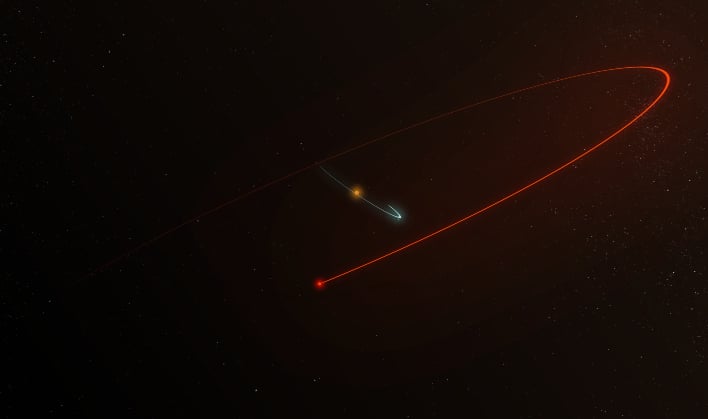Astronomers Track A Wobbly Star To A Perplexing Jupiter-Like Planet Holding Keys To How Planets Form
According to Salvador Curiel, of the National Autonomous University of Mexico (UNAM), the ability to determine the 3-D architecture of a binary-star system that incorporates a planet "cannot be achieved with other exoplanetary discovery methods." The method that produced the discovery of the exoplanet is known as astrometry, and has only been used to discover three planets thus far.
"Since most stars are in binary or multiple systems, being able to understand systems such as this one will help us understand planet formation in general," commented Curiel.
The duo of stars, called GJ 896AB collectively, are approximately 20 light-years from Earth. They are both red dwarf stars, which are the most common type in the Milky Way galaxy. The planet that was discovered orbits the larger of the two stars, which has nearly 44 percent of the mass of our own Sun. The smaller of the two stars is around 17 percent the mass of our Sun, and is separated from its larger counterpart by relatively the same distance of Neptune from the Sun. They orbit one another once every 229 years.
The instrument used to make the discovery is the National Science Foundation's VLBA. It is a network of ten observing stations which are located across the United States. The stations consist of a 25-meter radio antenna dish and a control building. The radio signals it collects are amplified, digitized and recorded. That recorded data is then sent to Sorcorro, NM in order to be processed by a powerful computer known as a correlator. All of the signals are combined and create one of the world's most powerful radio cameras.
Part of the data that was used to make the recent discovery was actually collected between 1941 and 2017 via optical observations, and then combined with data from VLBA observations between 2006 and 2011. The group of astronomers then made new VLBA observations in 2020. VLBA's ability to create super-sharp resolution imagery produced extremely precise measurements of the star's positions over time. All of the data collected was used to extensively analyze the data that unveiled the stars' orbital motions.
The larger star's motion showed a subtle wobble that led to the discovery of the exoplanet. The wobble is indicative of a planet's gravitational effect on a nearby star. When the barycenter, the location between a star and planet, is far enough from the star, the star's motion is able to be detected.
The data was sufficient enough for the astronomers to estimate the planet has around twice the mass of Jupiter and orbits the star every 284 days. It is located around the same distance from the star, as Venus is from our own Sun.
"This means that the planet moves around the main star in the opposite direction to that of the secondary star around the main star," noted Gisela Ortiz-Leon, of UNAM and the Max Planck Institute for Radioastronomy. "This is the first time that such dynamical structure has been observed in a planet associated with a compact binary system that presumably was formed in the same protoplanetary disk."
By continuing to study similar systems, astronomers are hopeful they can gain important insights into how planets are formed in binary systems. Being there are alternative theories for the formation mechanism, the study could narrow down which one is the most likely, according to Joel Sanchez-Bermudez, of UNAM.
The astronomers who participated in this study are planning on sharing their findings in the September issue of the Astronomical Journal.
Top Image Credit: NRAO/AUI/NSF



